There’s a couple of schools of thought about buying a bike to get you through your test. You can pick up the nastiest, cheapest learner bike you can, and suffer all the way through your learner days, while saving up for a bigger bike once you’ve passed the test. Alternatively, you can spend a bit more on a nice, decent quality 125, and get a little more enjoyment out of your time on L-plates.
I was definitely a cheap and cheerful man when I passed my test nearly 30 years ago. I bought a rather tired 1978 Honda CG125 for £120, with a lid thrown in, and never looked back, passing my test six months later. However, I’ve come to Lisbon to ride a much posher single-cylinder Honda 125 – the new 2018 CB125R. And it’s very much the high-quality choice, with plush new café-racer styling, that’s shared with Honda’s 2018 CB1000R and CB300.
Parked up outside the launch hotel, the new 125 does look like a much bigger machine. Various neat design touches – ‘fat’ handlebars, front radial brake caliper, aluminium bodywork flashes, even the exhaust can and swingarm – all give the impression of a far fancier machine than ‘just’ a 125 learner bike. Suddenly, I’m looking forward to this more than I expected, despite the heavy rain showers that are battering Lisbon this morning.
Waterproofs on, and we head out. That first big-bike impression given by the styling sadly doesn’t continue when it comes to the engine of course. The restricted power output obviously isn’t Honda’s fault, but it always jars a little when you first get onto a sub-15bhp machine after thousands of miles on full-power bikes.
I soon get used to it though, and quickly re-calibrate my brain from the Yamaha MT-07 I was riding last week. Honda’s done a good job with the CB125 engine actually – the power delivery has a natural feel to it, with a decent level of torque through the rev range. The gearbox is slick and ratios well spaced, so you can keep the little 125cc SOHC two-valve lump on the boil easily enough. A dab of clutch slip helps at times, but in city traffic, you can keep well ahead of cars and buses without any troubles.
The chassis works well here too. The overall profile is super-slim of course, and you can make a lot of gaps you wouldn’t manage on a big bike. The suspension does a good job of absorbing bumps and potholes, without being too soft and bouncy, while the brakes are strong with plenty of feel. There’s a smart IMU-equipped ABS unit incorporated into the stoppers too, giving a sophisticated, secure feel to the braking overall. It’s designed to stop the back wheel lifting under hard front braking, letting novice riders brake much harder without instability.
After a morning in town, we head out into the countryside near Lisbon, towards the tourist towns of Cascais and Sintra. Once the roads open up, the learner-legal power deficit is even clearer of course, but the chassis actually impresses a little more. On one twisty mountain back road, the handling felt much closer to a bigger bike, with impressive stability, combined with nimble steering, and loads of feedback in a bend. You can brake late and hard, and on the downhill sections, where you aren’t hamstrung by the low power output, the CB actually feels really capable – sporty and lively.
We stop for lunch, and I cast an eye over the CB125R chassis again. And when you look at the fundamental layout here, it’s clear why the little CB feels like a bigger bike. At the presentation, Honda told us the frame, swingarm and forks are shared with the bigger CB300, while the wheels and tyres are also wider than usual on a 125. A 150/60 17 rear is a very decent size, and plays its part in the impressive handling package. Honda’s worked hard to centralise mass on the bike too, and you can see that the engine, exhaust, shock, and rider are all located very close to the middle of the bike. Clever stuff. The fact it’s claimed to be the lightest bike in its class too – at just 126kg wet – must also be playing a part here.
One more (relatively) high-speed blast back to the hotel, slipstreaming the lead rider on his Africa Twin, and we’re done for the day. I managed to see 83mph on the clock on the motorway section – not bad from the little motor – but the fuel consumption figure at the end of the day is even more amazing. Despite spending 95 per cent of the day at full throttle, my little CB is still showing well over 100mpg on the consumption meter.
So – if you’re looking to buy your first 125 learner bike this season, by all means go for the cheap and cheerful option, like I did in 1988. But if you’re able to go for the option of a nice, high-quality new roadster, with big-bike feel and quality, I reckon the new CB125R would make a great choice.
SPECS
Price: £3,949
Engine: 2v single, SOHC, liquid cooled, 124.7cc
Bore x stroke: 58×47.2mm
Compression ratio: 11:1
Max power (claimed) 13.1bhp@10,000rpm
Max Torque (claimed) 7.4ft lb@8,000rpm
Transmission: six speed, chain drive
Frame: steel tube trellis
Front suspension: 41mm Showa USD forks
Rear suspension: monoshock
Brakes: Single 296mm wave disc, four-piston Nissin caliper (front), 220mm disc, single-piston Nissin caliper (rear), IMU-assisted ABS
Wheels/tyres: Aluminium/Dulop GPR-300, 110/70 17 front, 150/60 17 rear
Rake/trail: 24.2°/90.2mm
Wheelbase: 1,345mm
Seat height: 816mm
Weight (claimed, kerb weight): 126kg
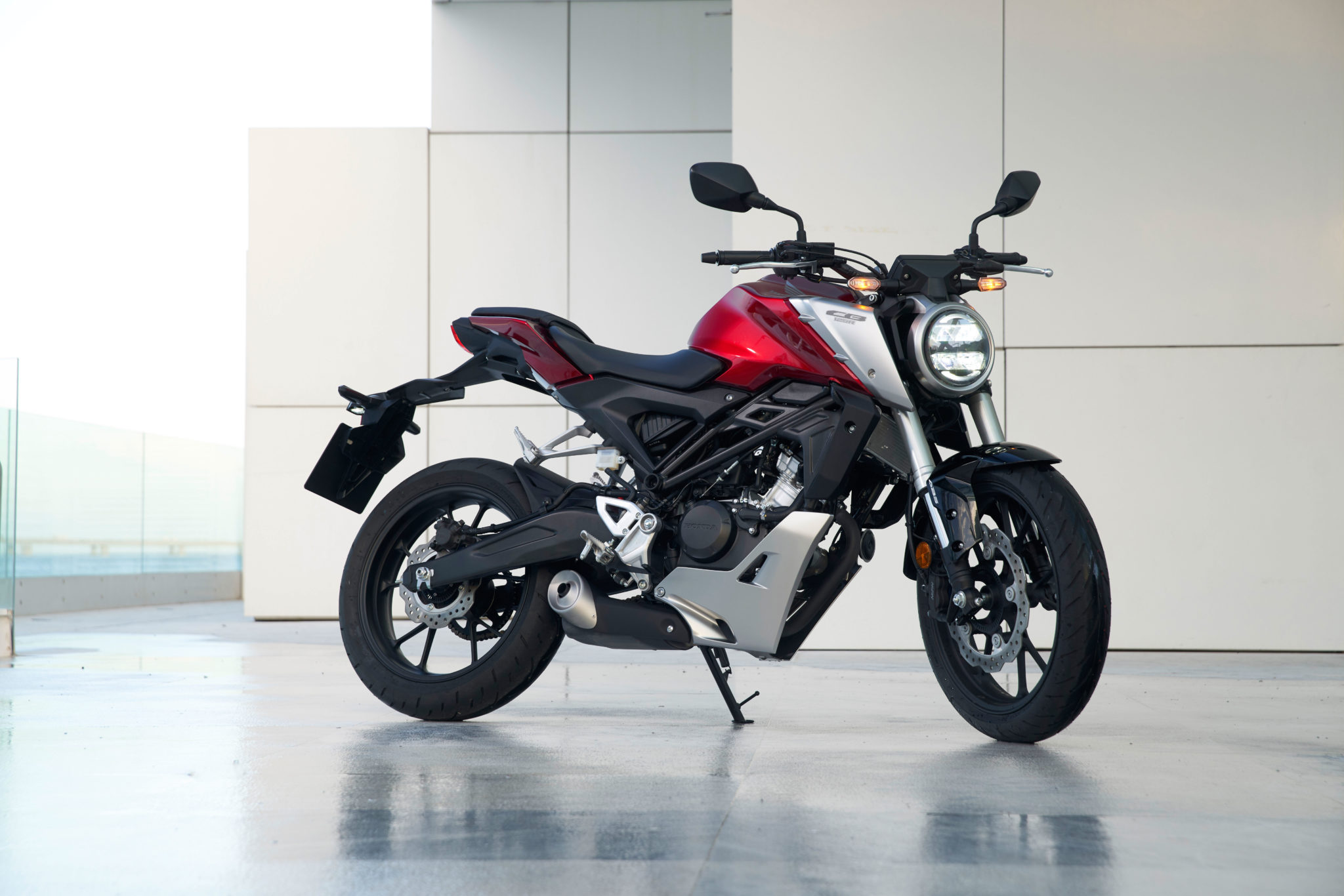
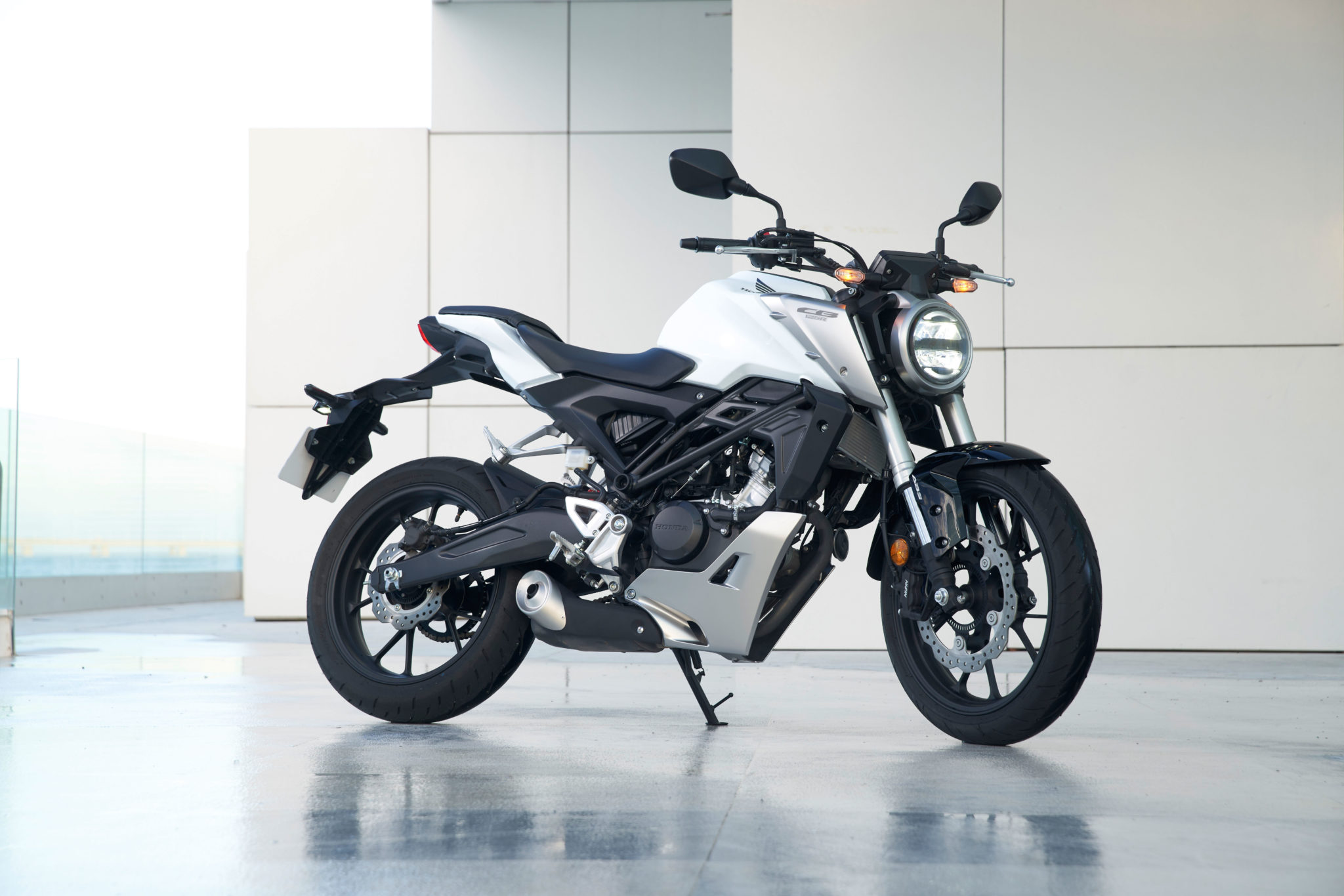
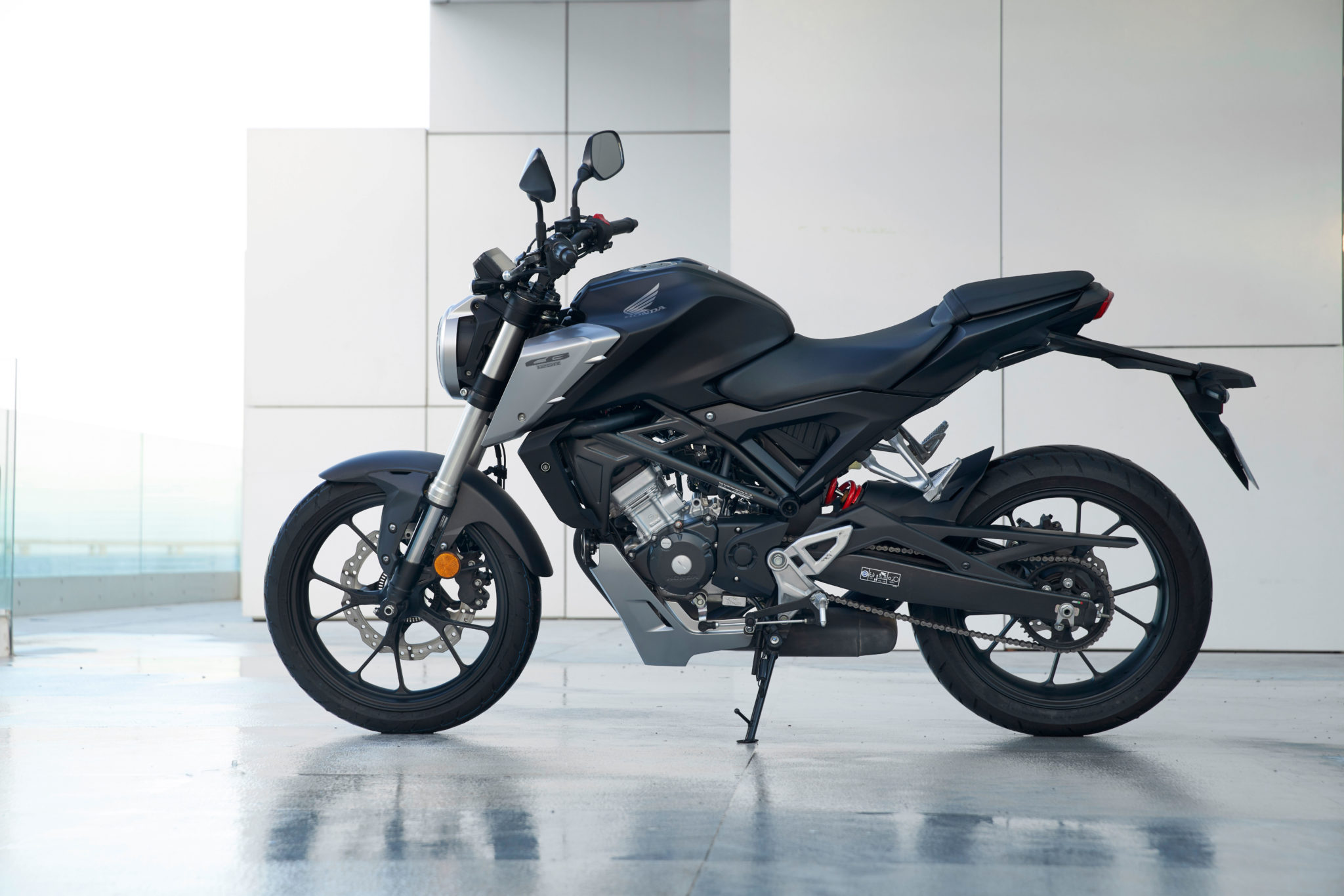
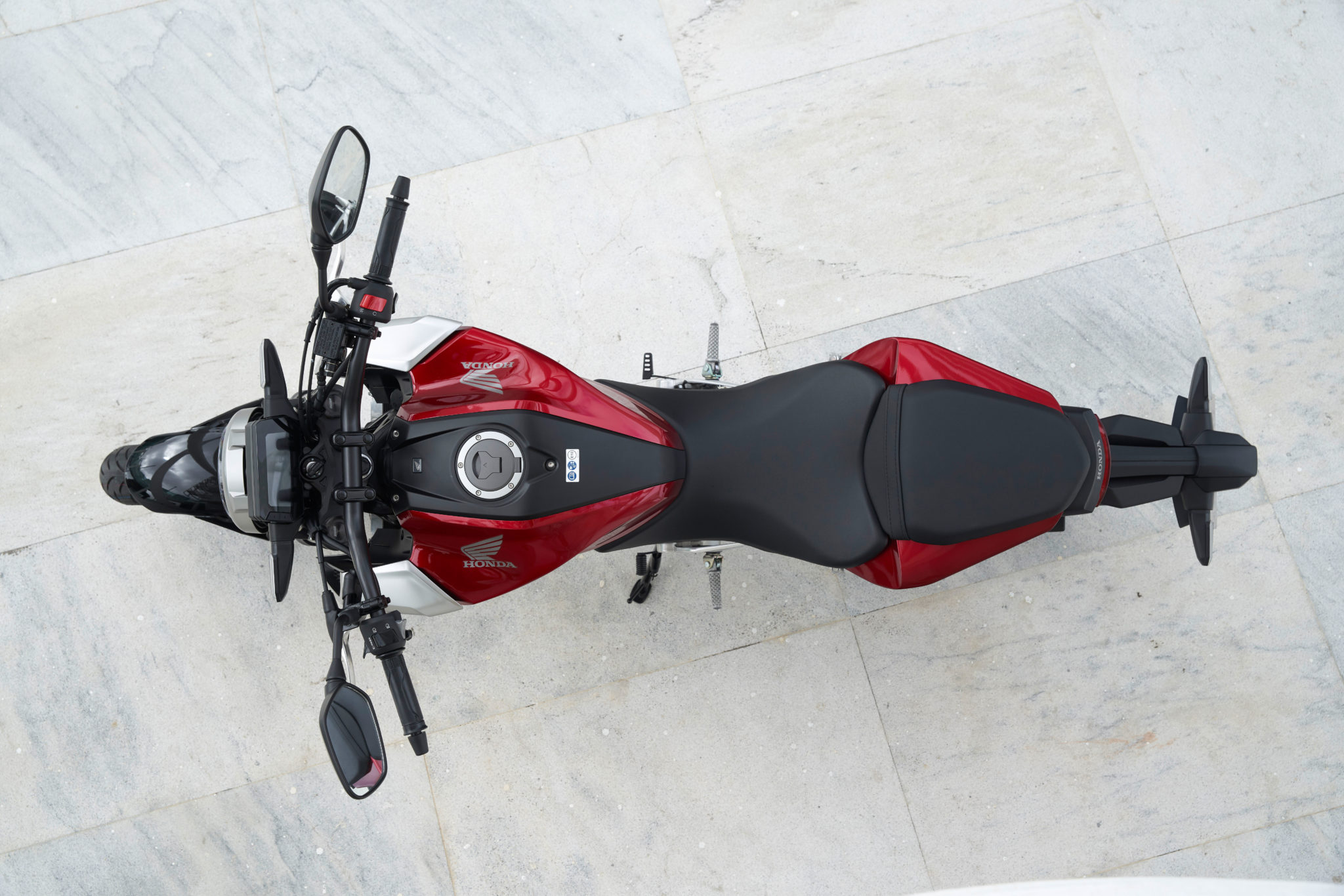
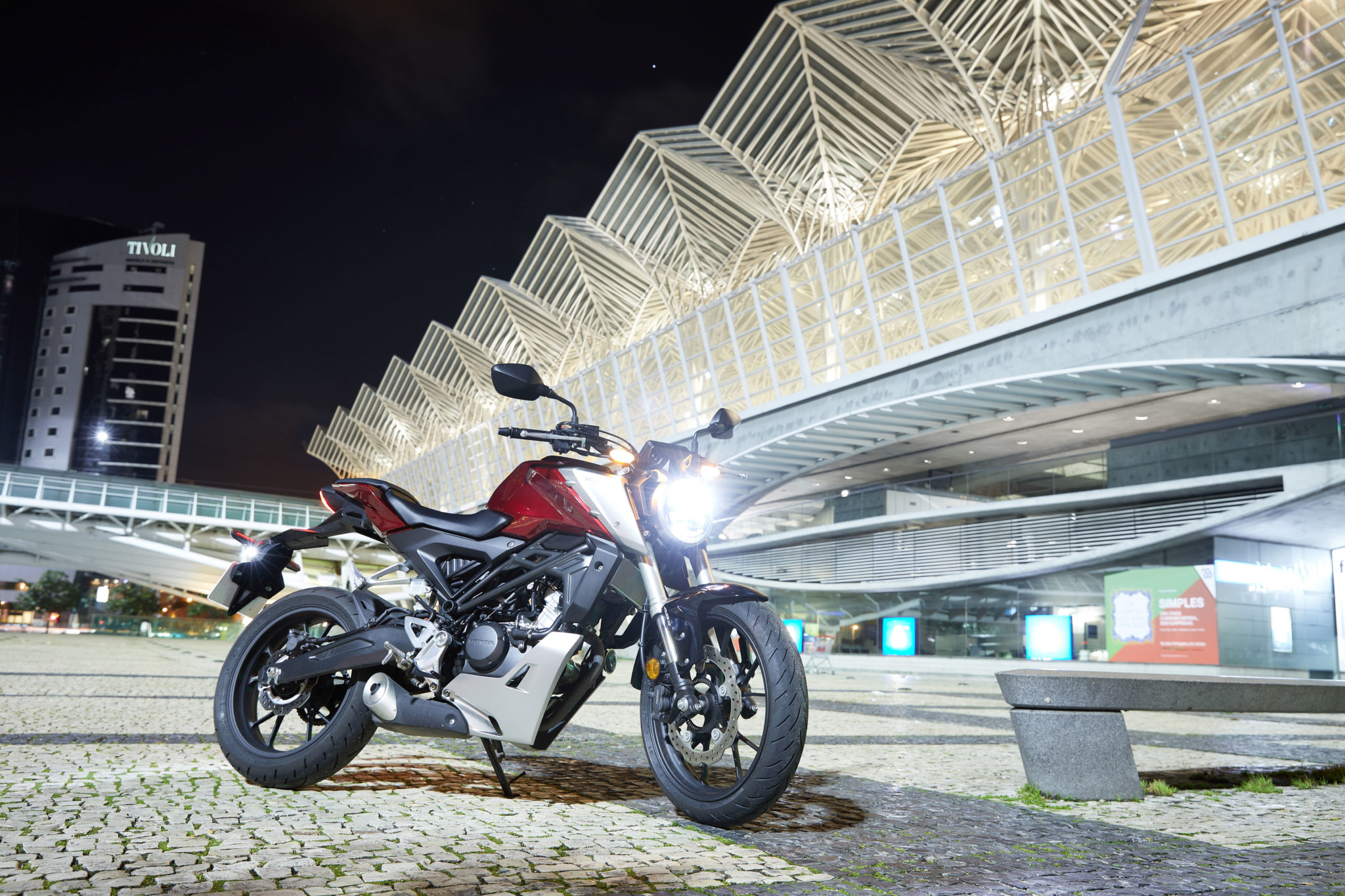
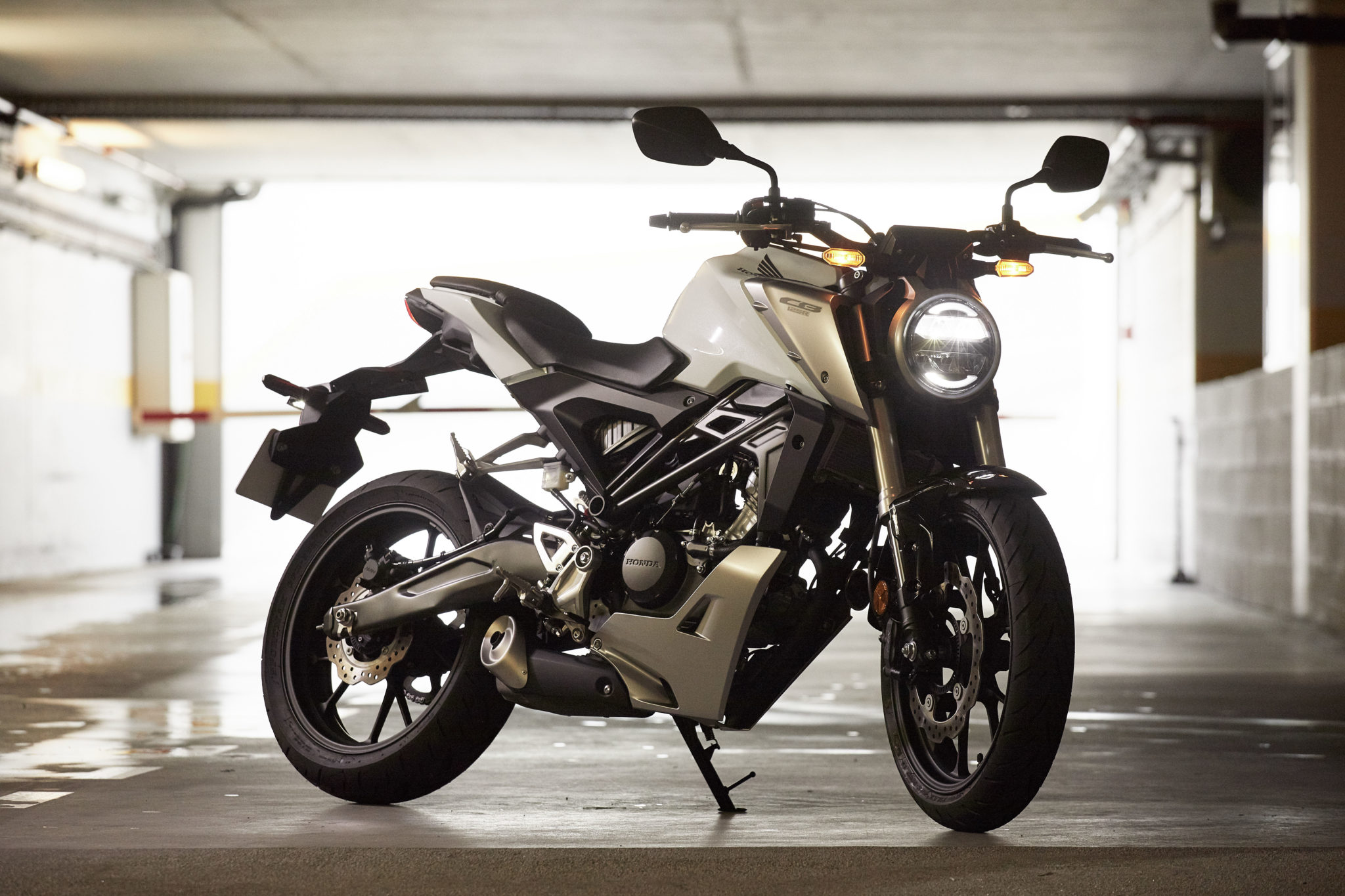
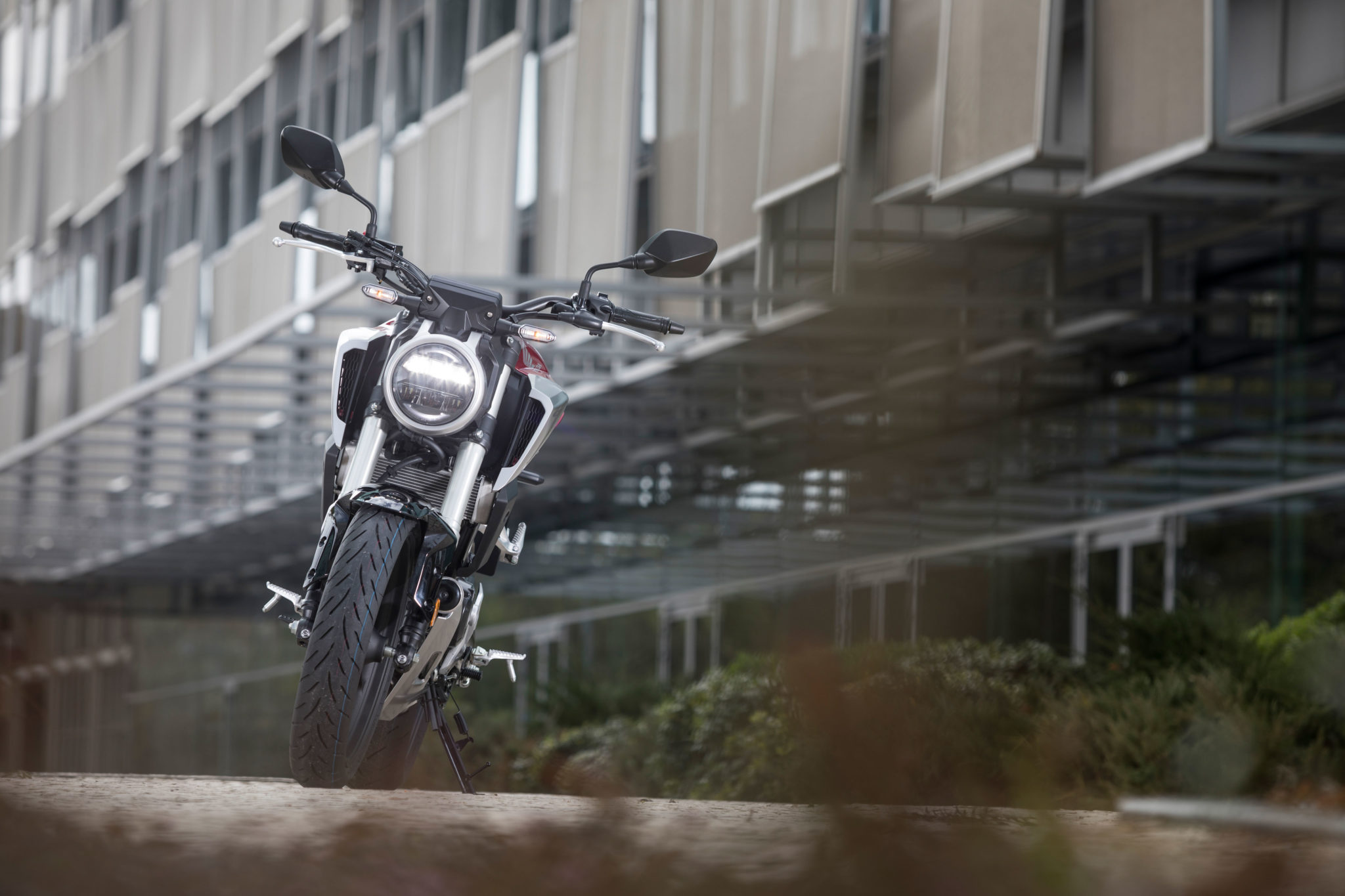
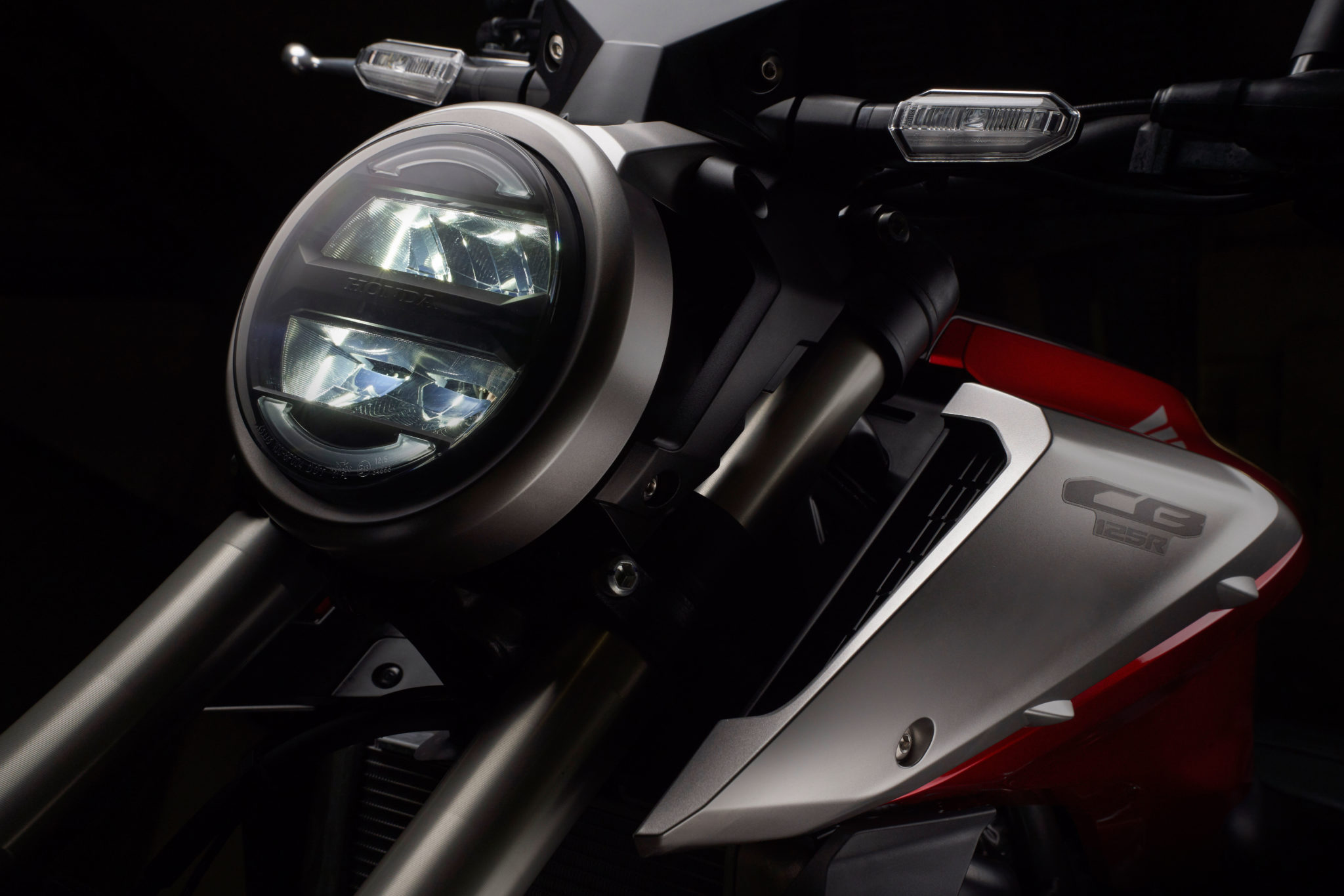
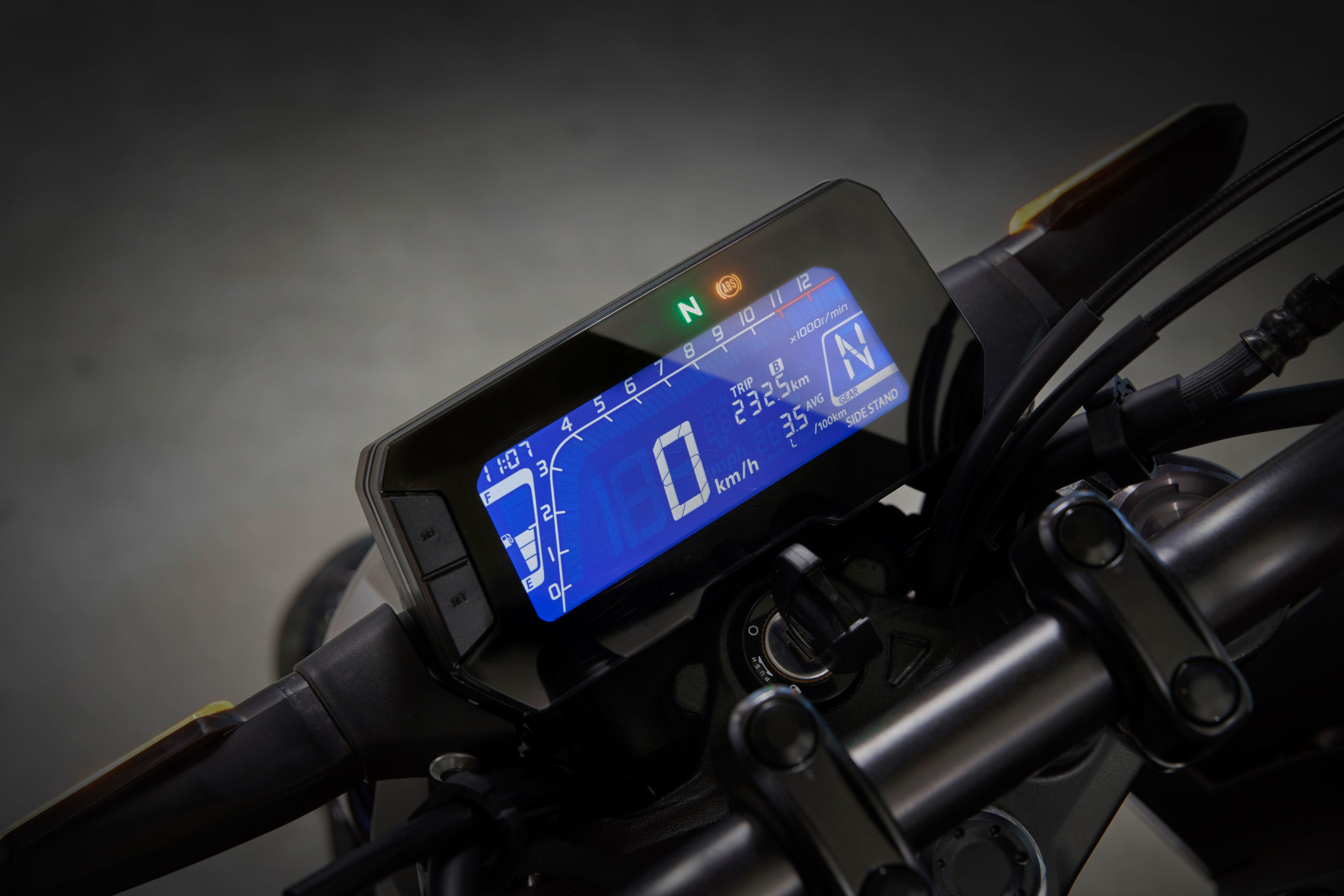
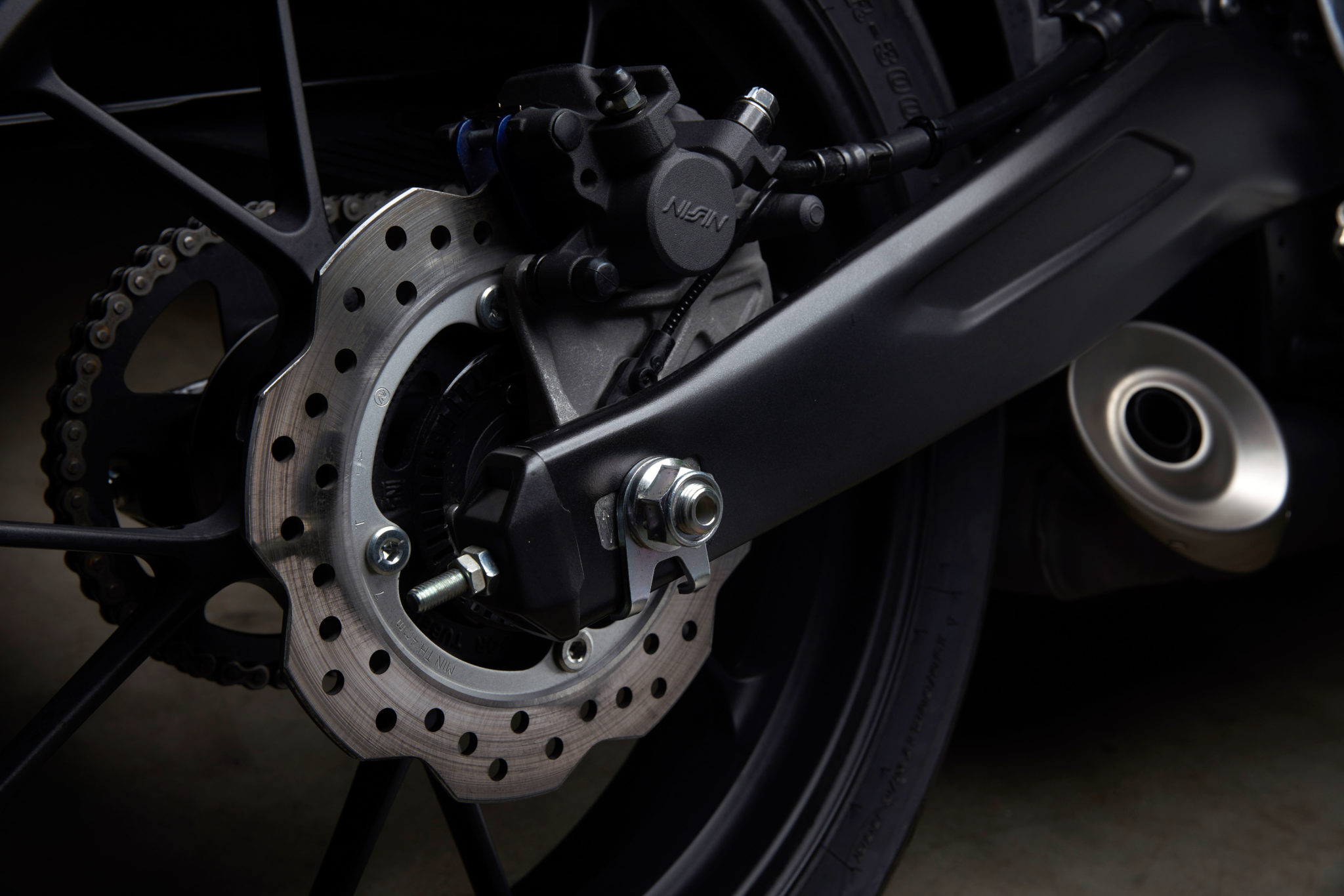
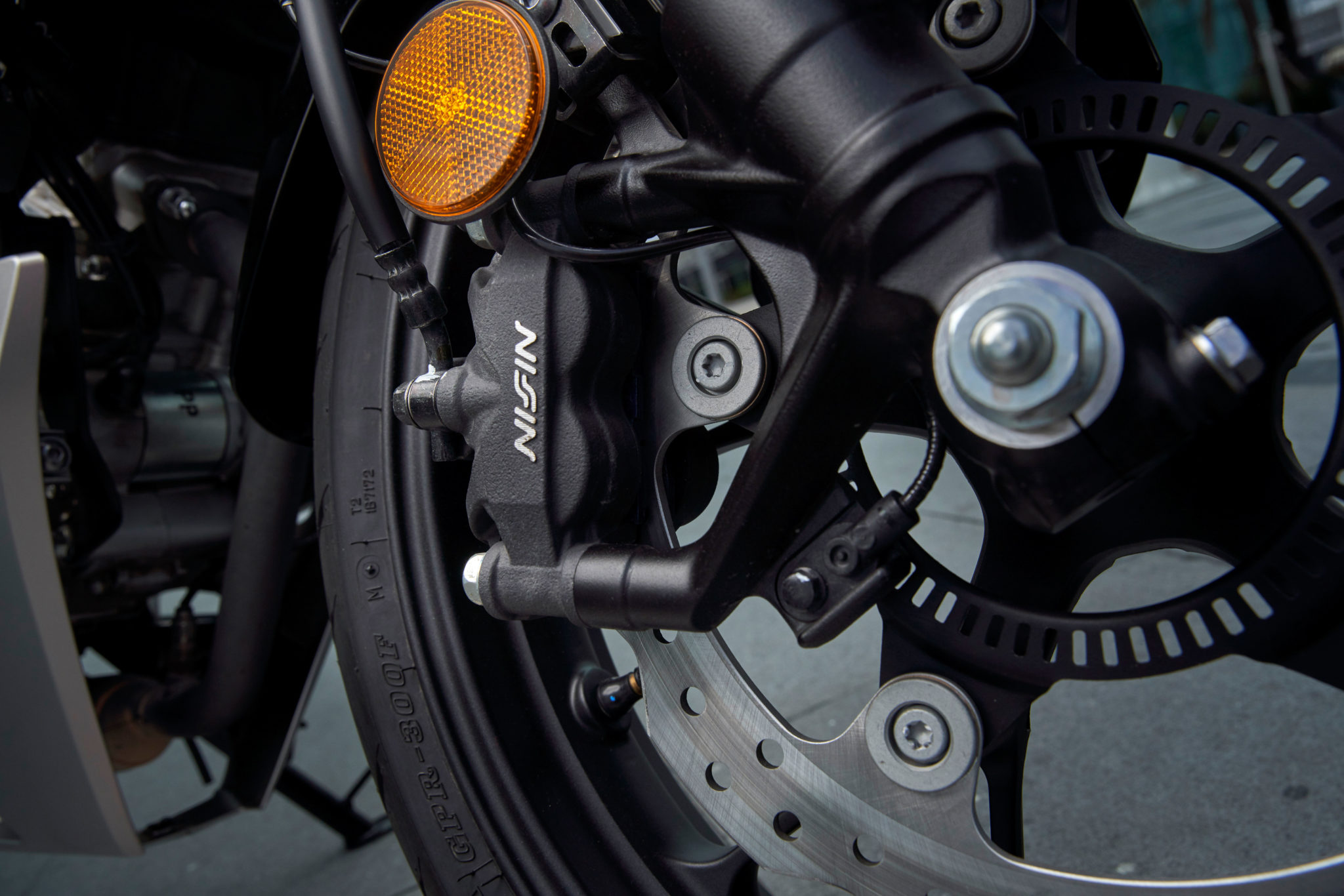
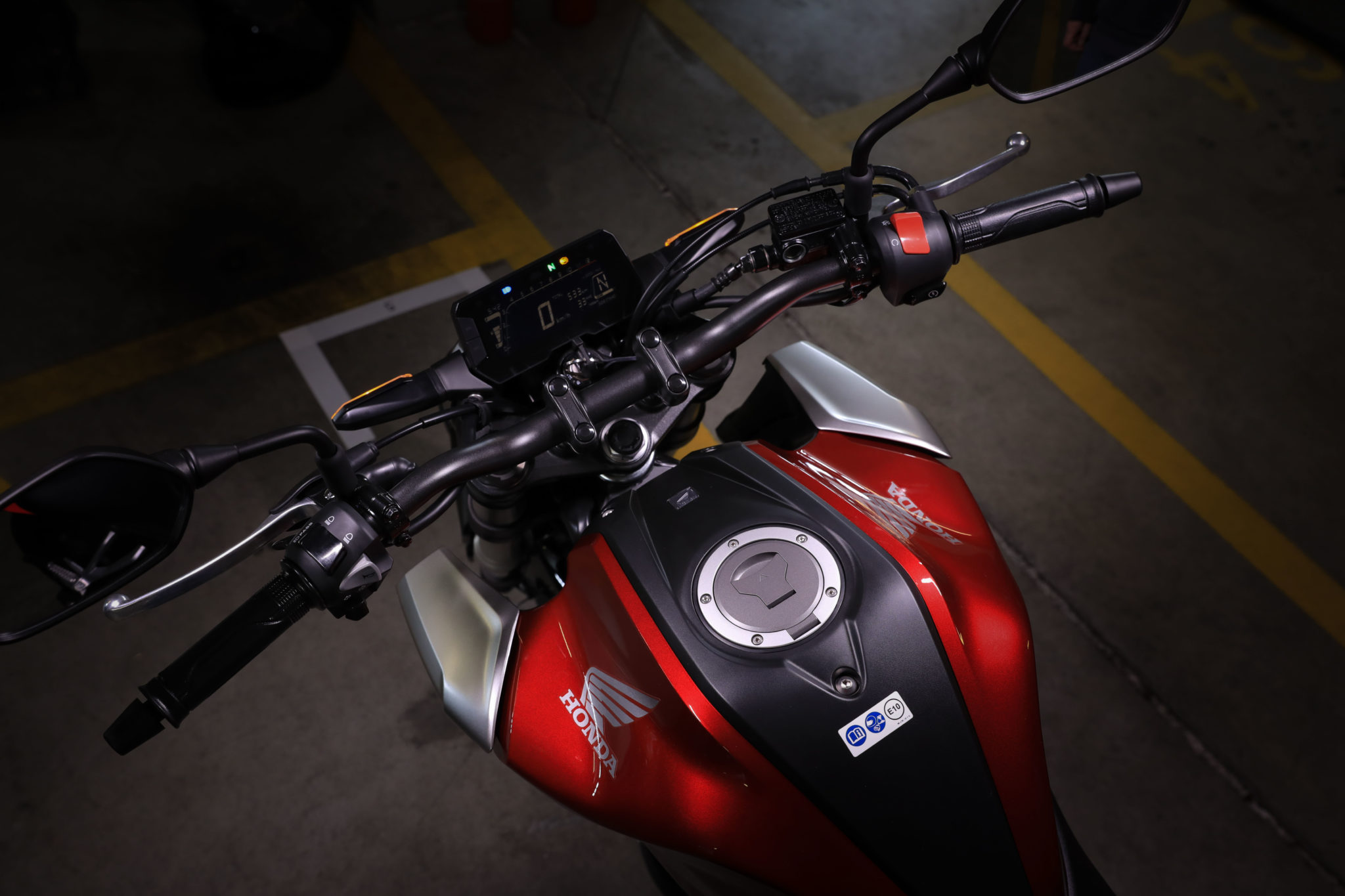
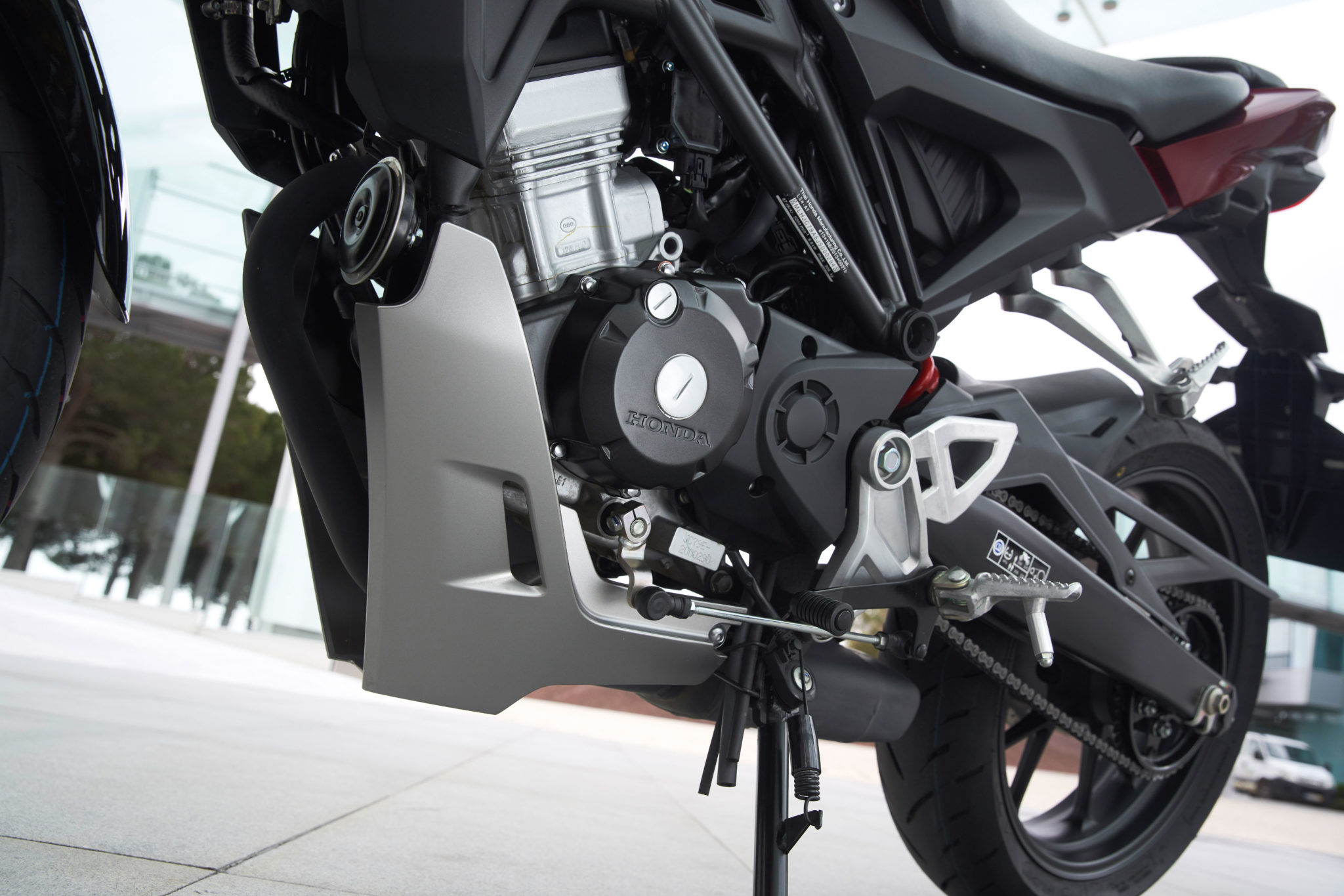
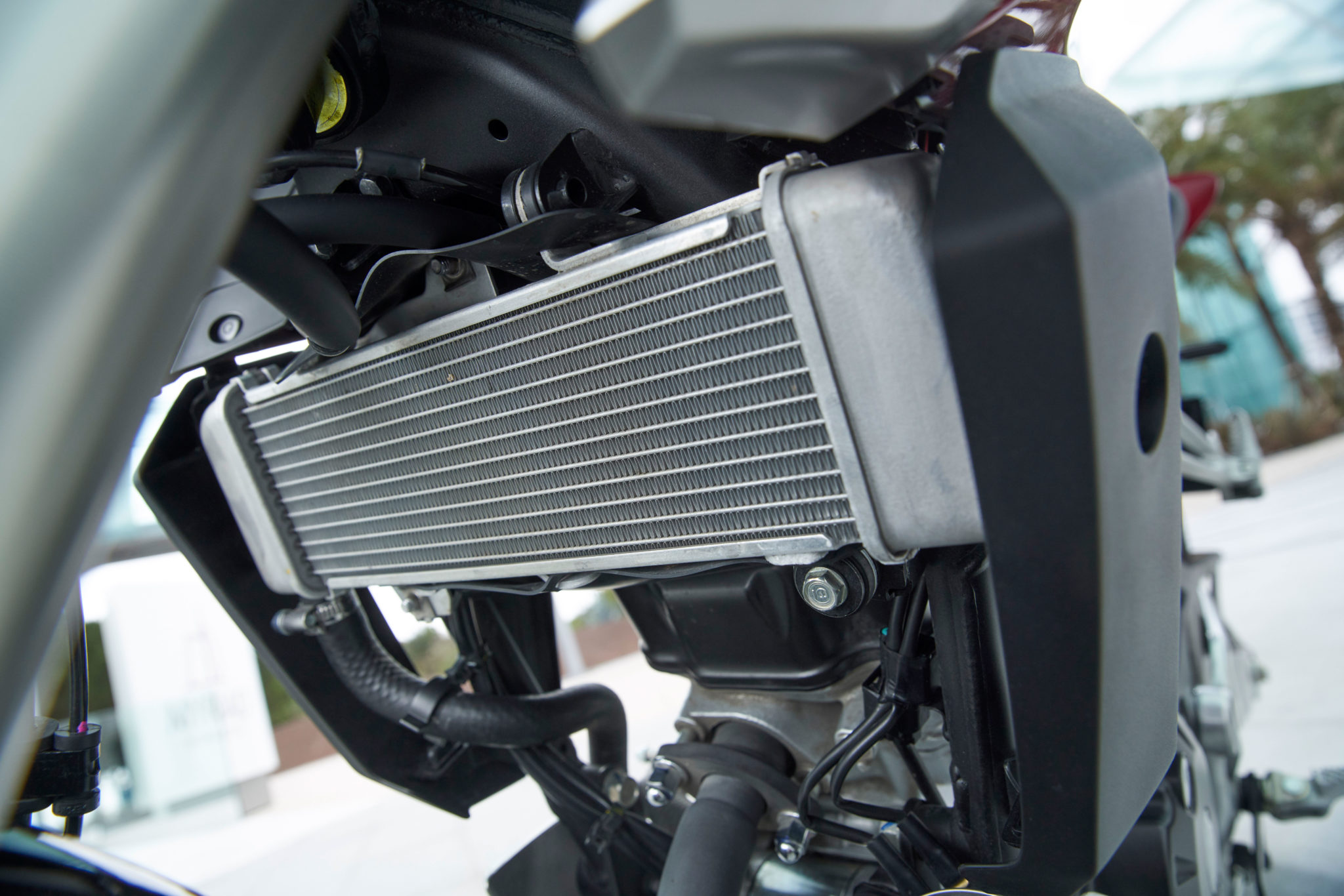
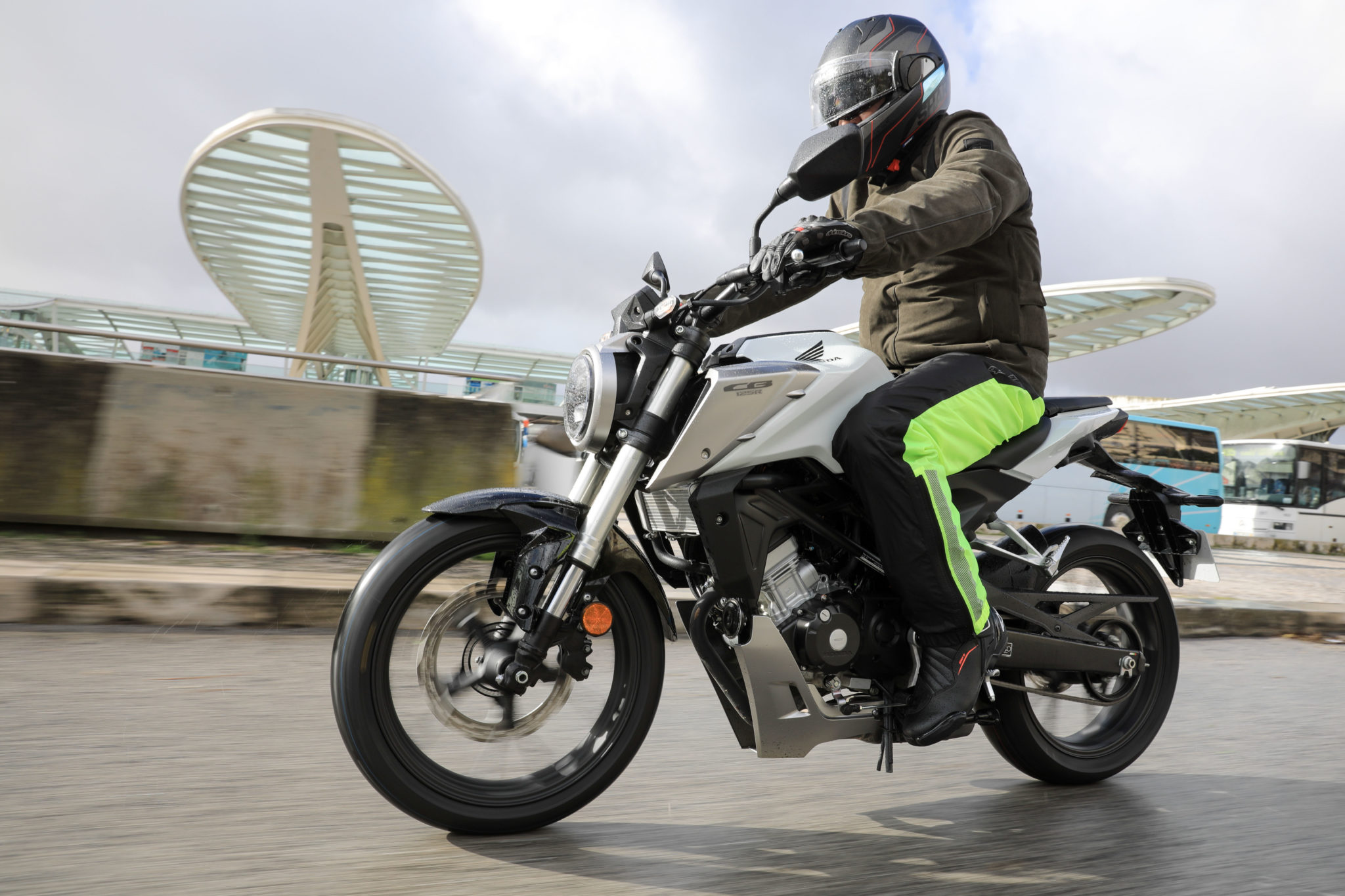
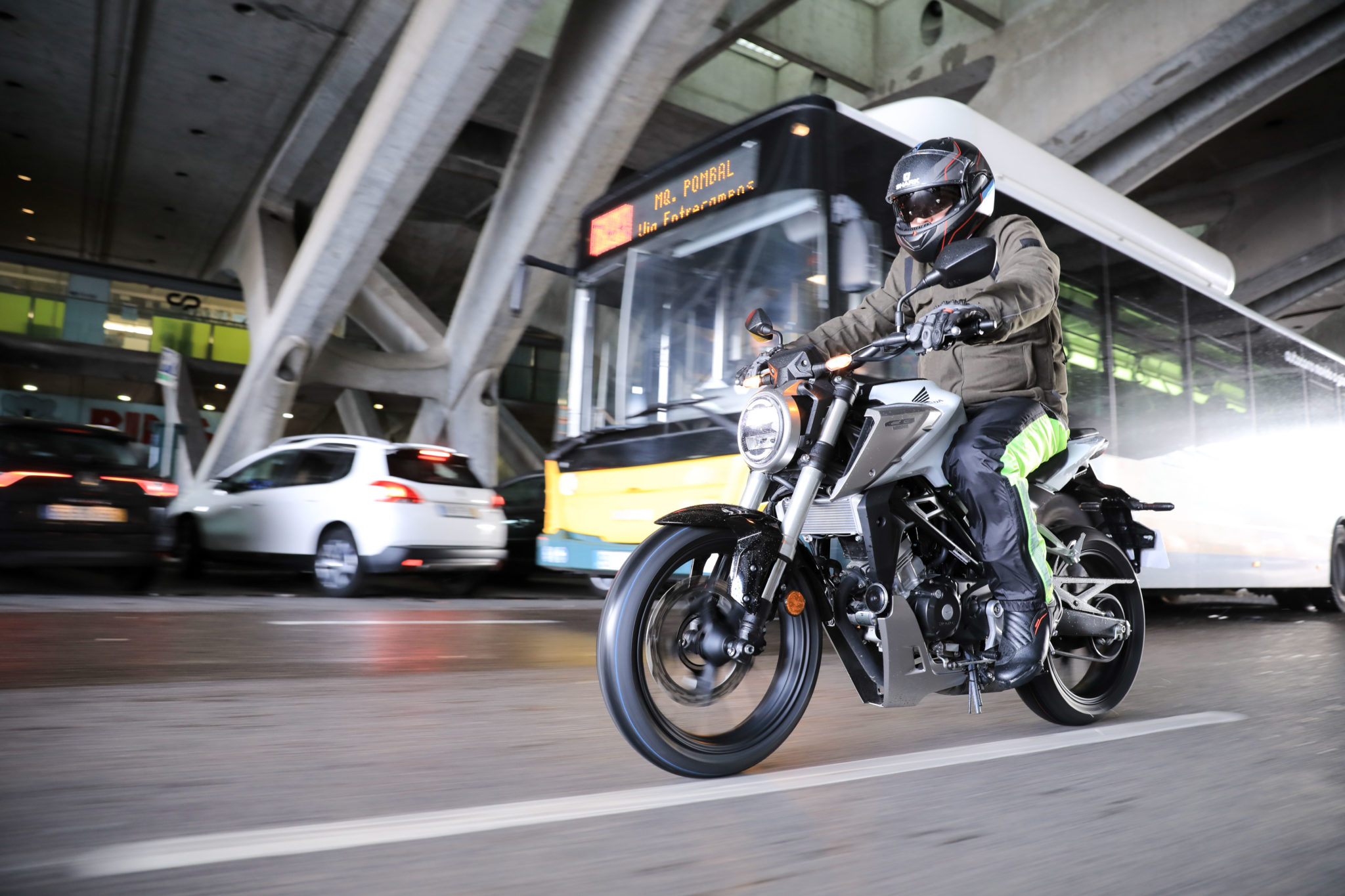
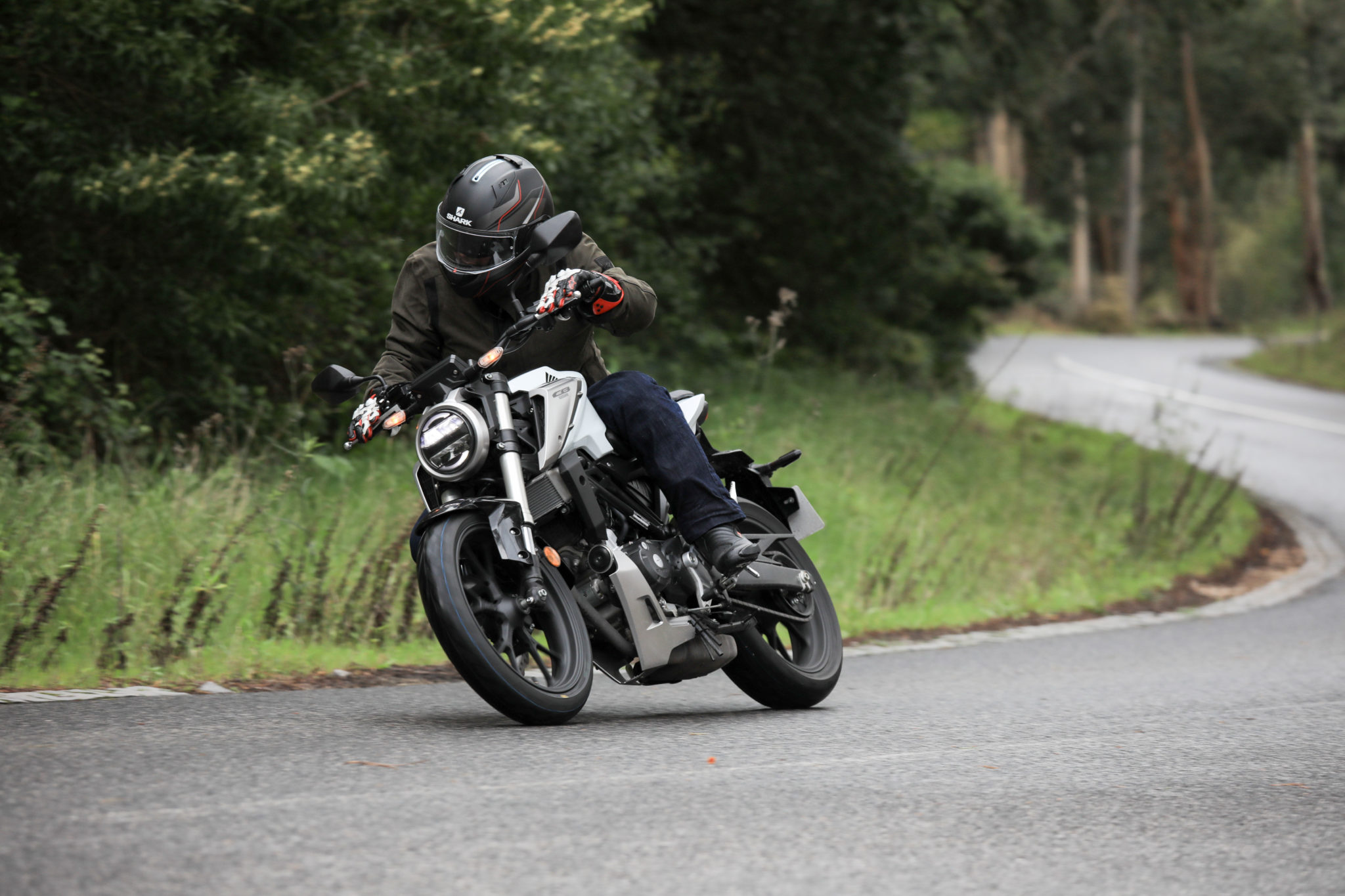

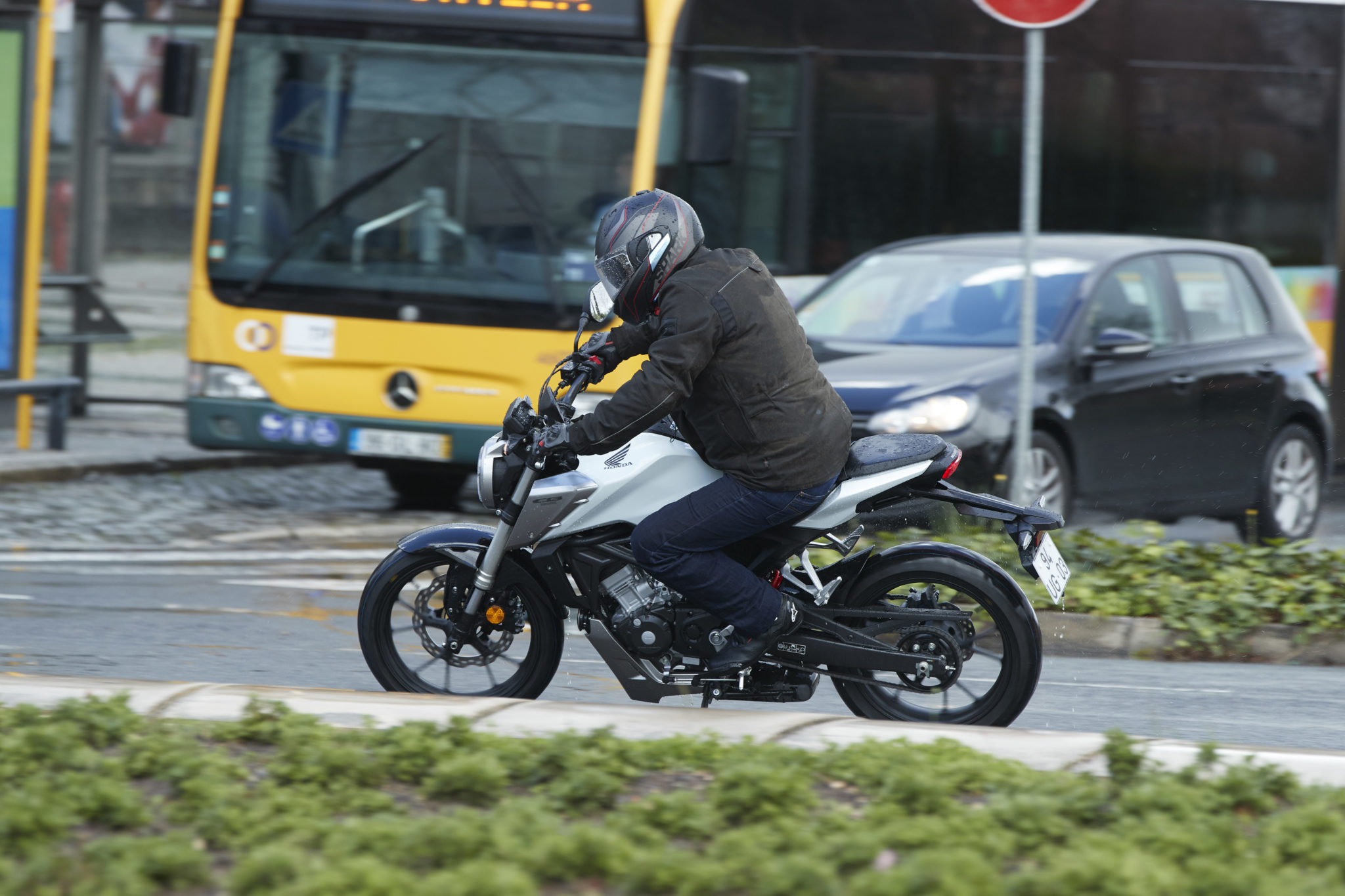
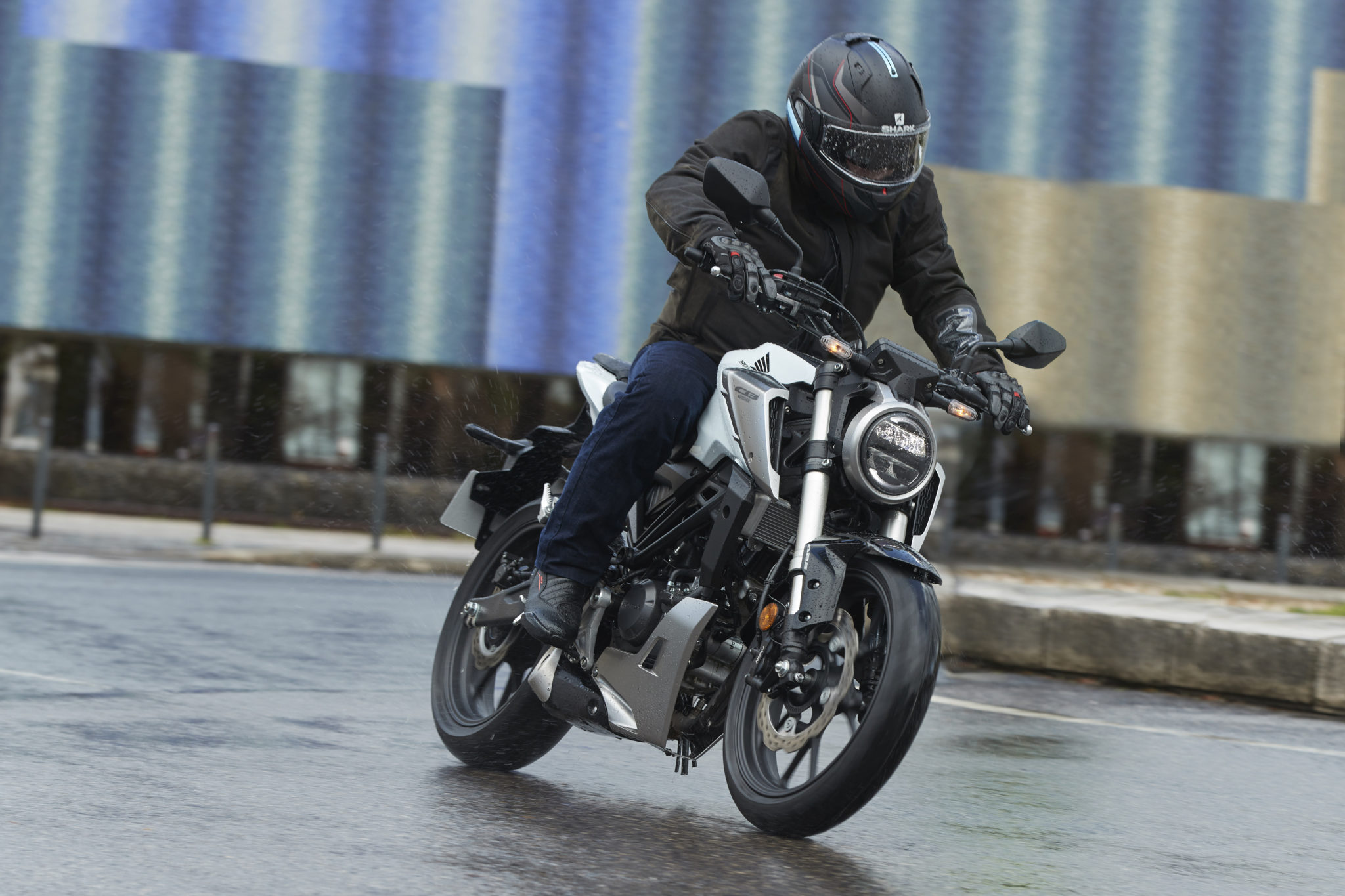
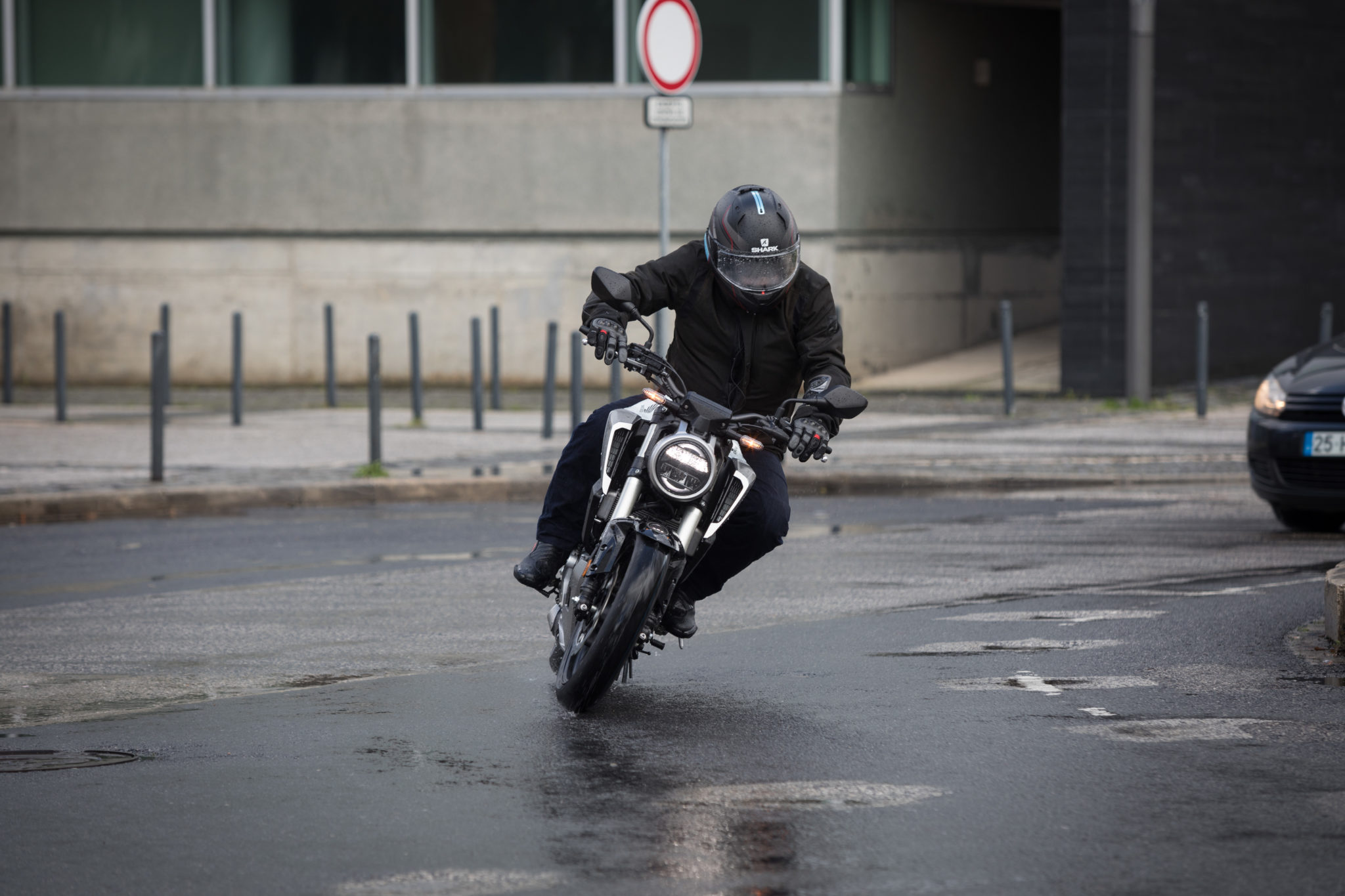
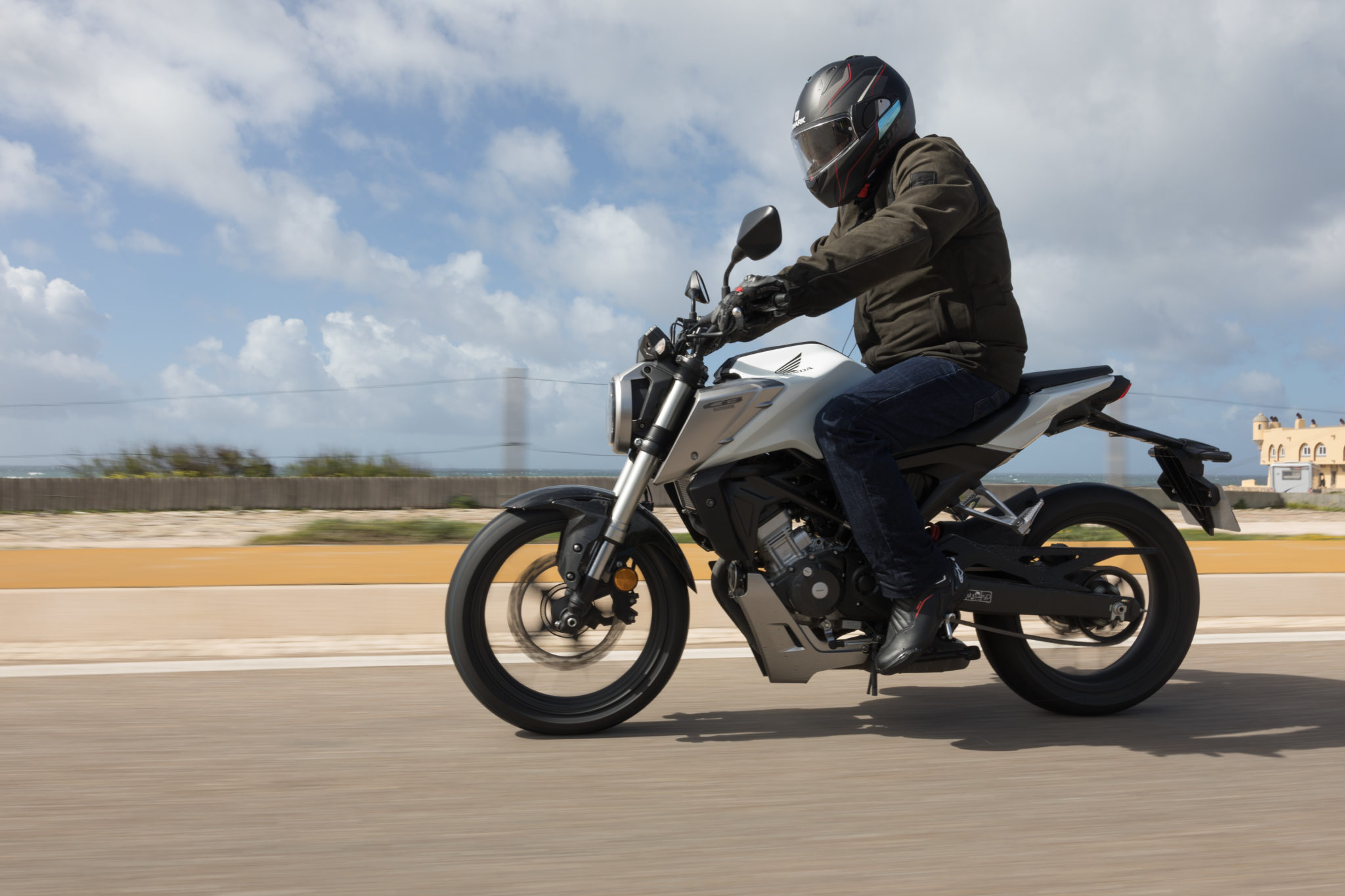
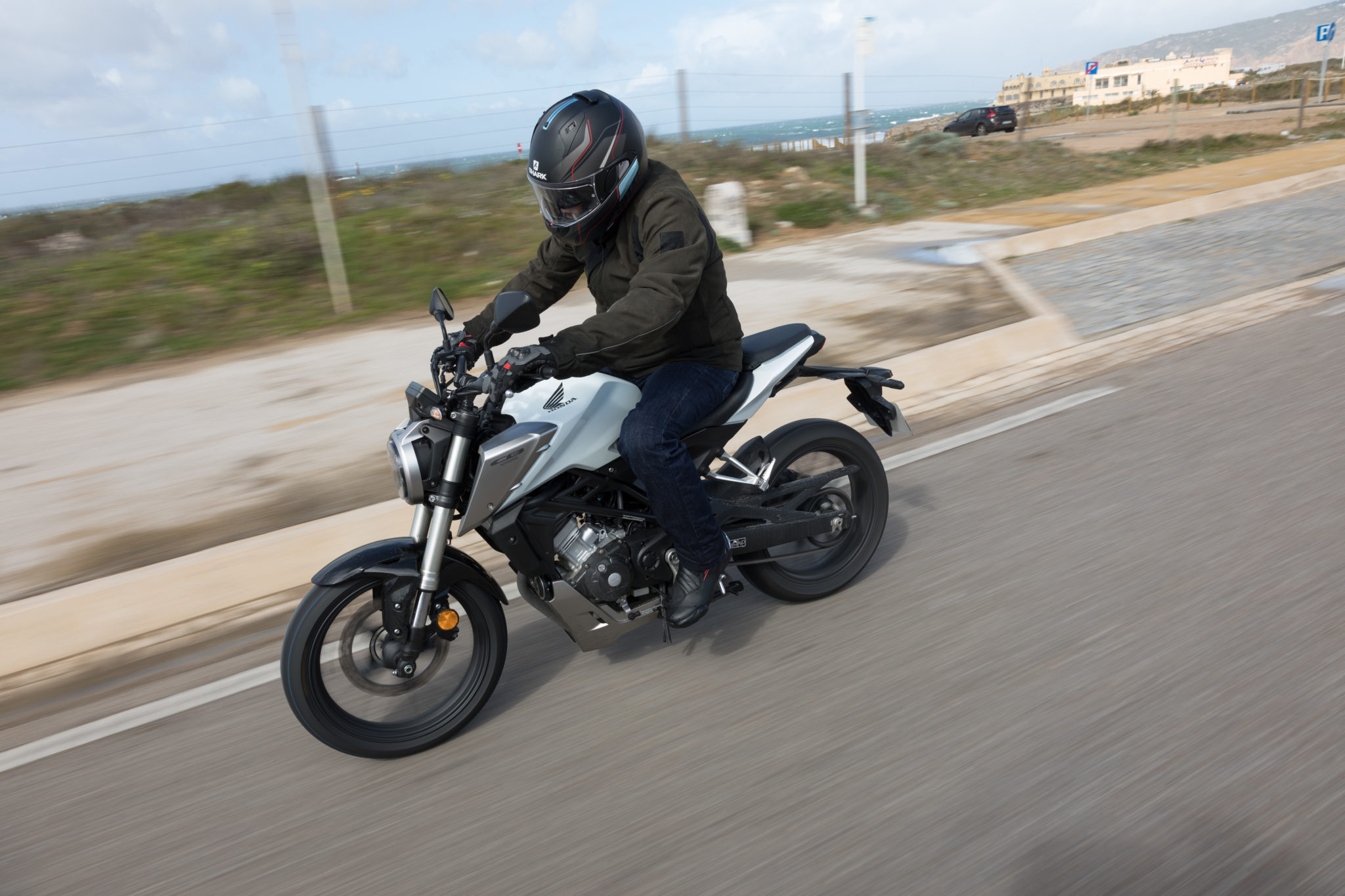
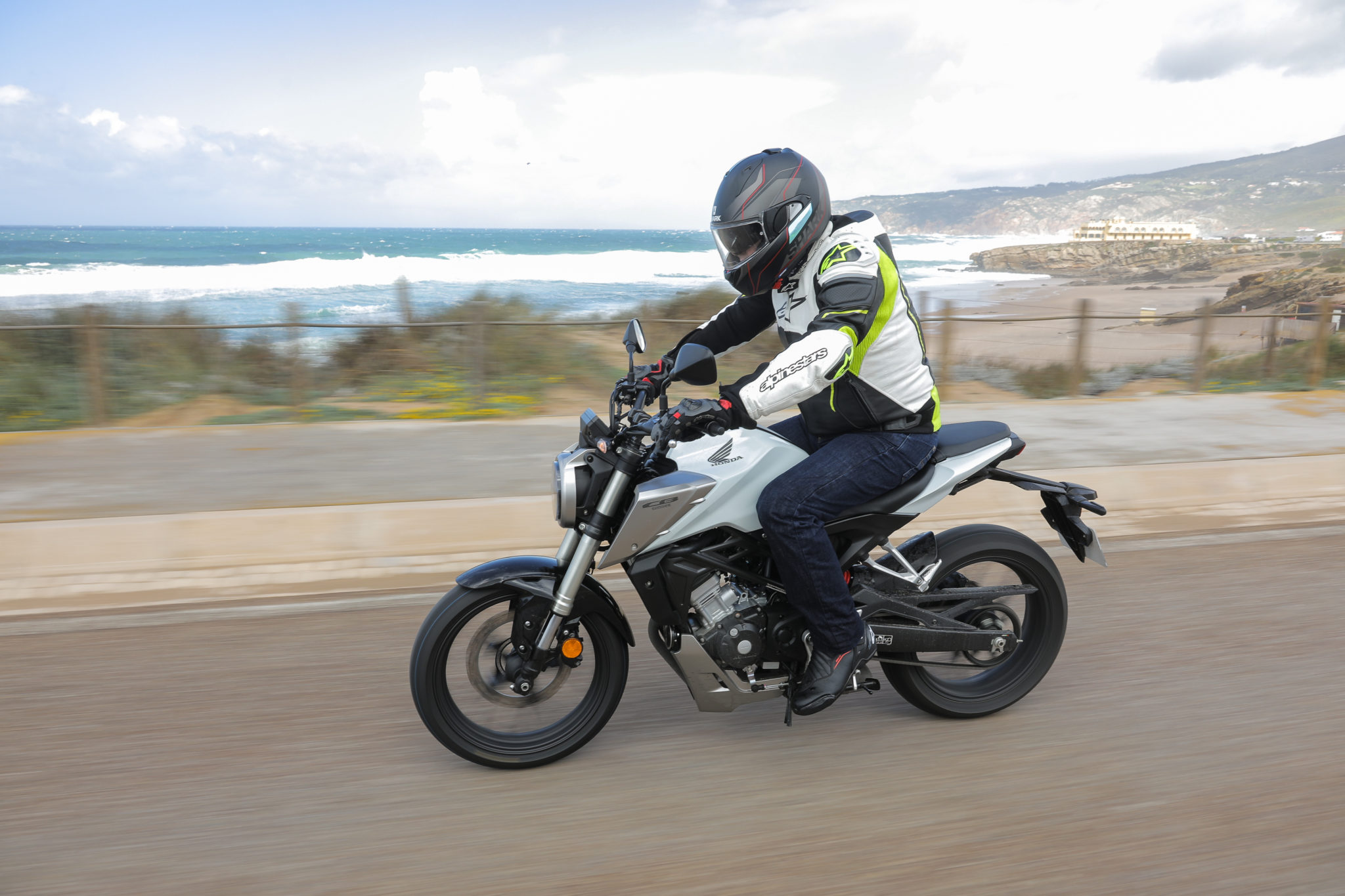
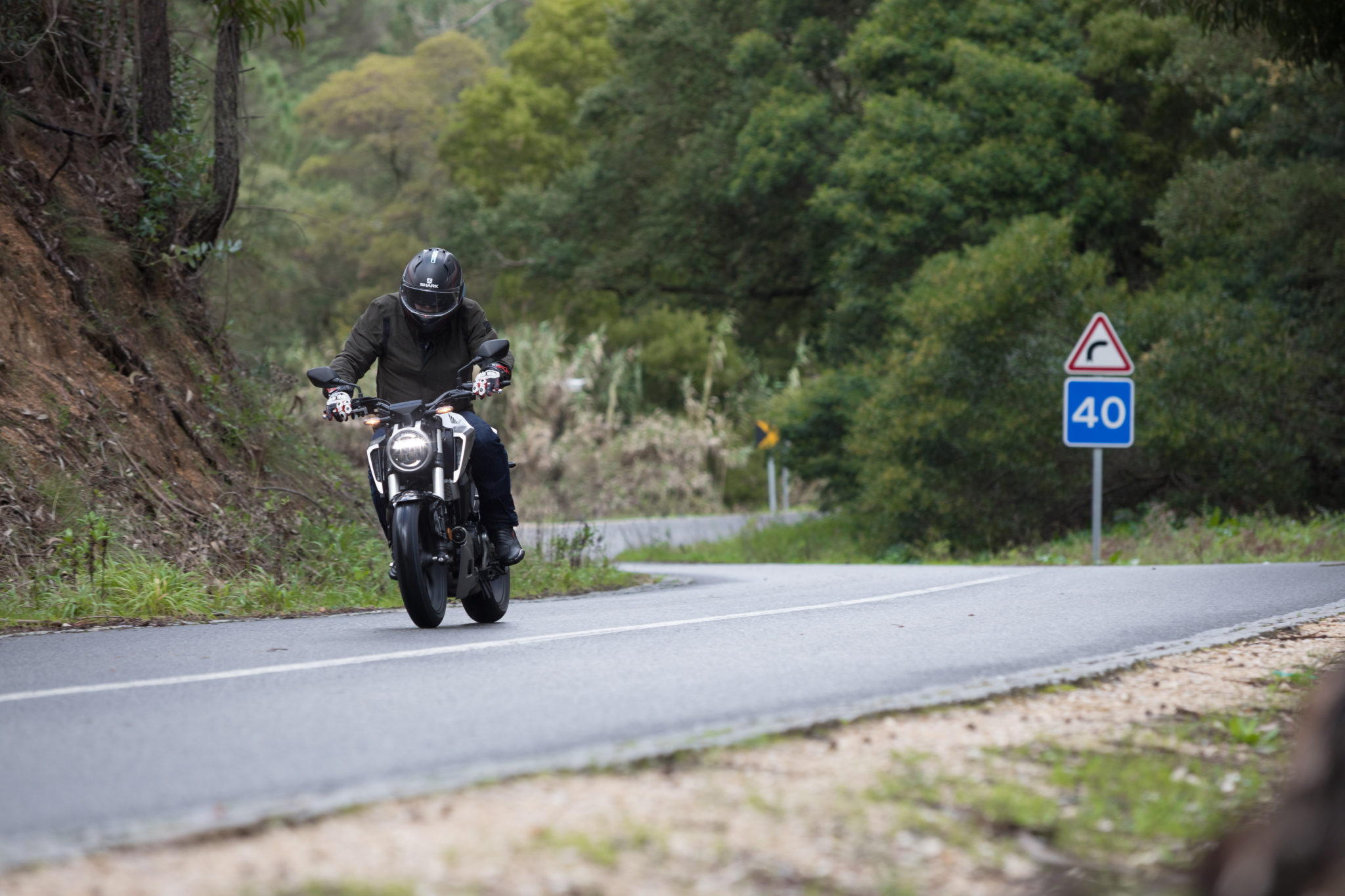

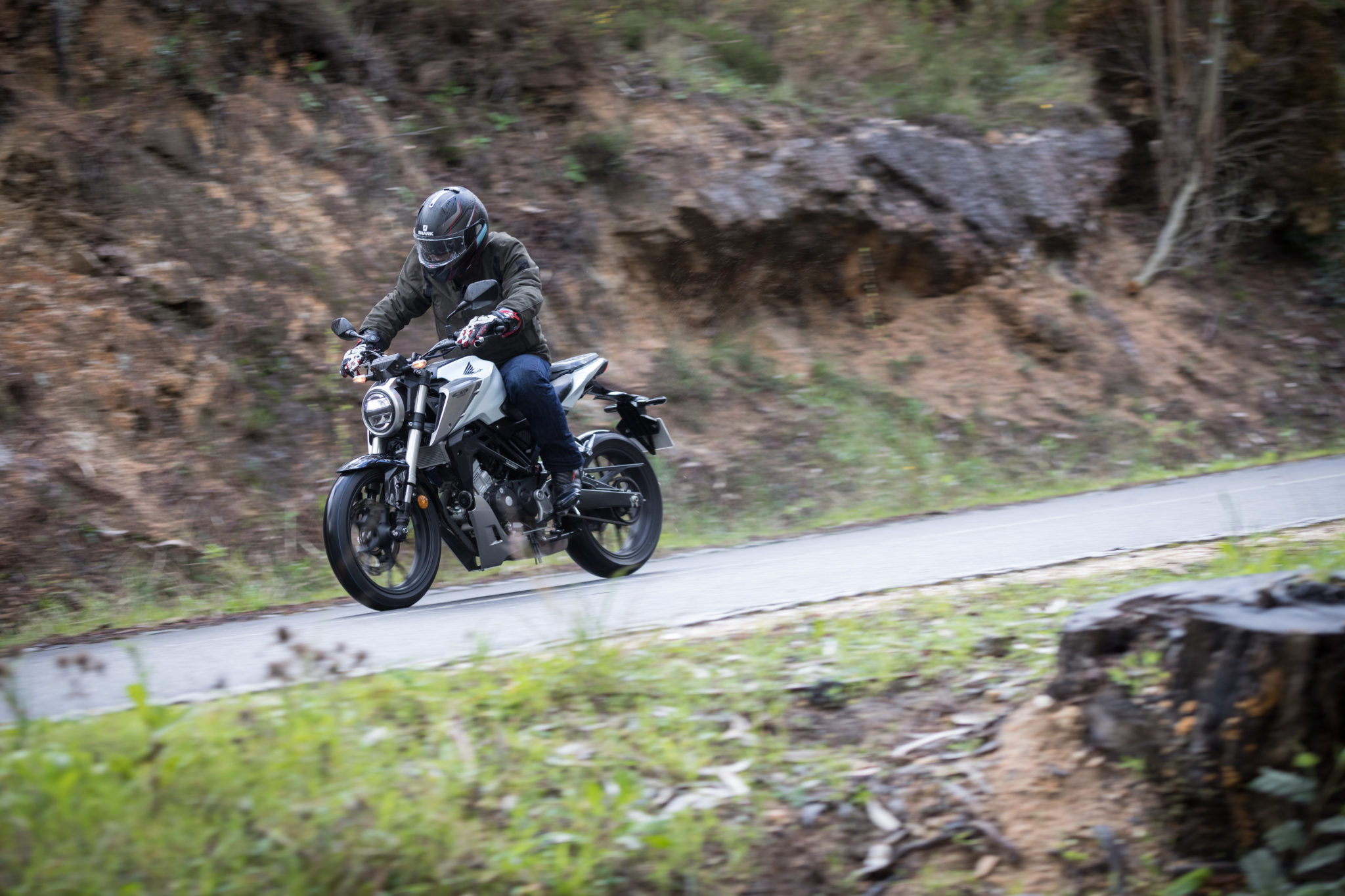
2 comments on “First Ride: Honda CB125R”
Looks like a super bike for starters, bit pricey but a lot more than the CB125F, particularly in the power department where the latter is an embarrassment for learners as it would not pull the skin of a rice pudding and invites stupid motorists to overtake when they should not, well in my experience.
Hey there, You’ve done a great job. I’ll certainly digg it and personally recommend to my friends.
I’m sure they’ll be benefited from this website.